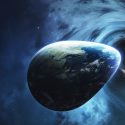Our Solar System has eight planets, a few dwarf planets and more than 200 moons. But wait. Are you seeing double? Or did every planet suddenly get a twin? Where would each planet’s double fit in? Why would Earth 2.0 not support any life? And which planet’s twin could turn out to be habitable?
The Solar System has three types of planets. Rocky, gaseous and icy. These all formed after our Sun was born from a spinning disc of dust and gas. As temperatures in the Solar System rose, the inner regions were as hot as 1,730 °C (3,140 °F). And only substances with very high melting points such as iron, silicon and magnesium could remain solid.
This gave way to our rocky, terrestrial planets, Mercury, Venus, Earth and Mars. Further out, temperatures were as cool as -225 °C (-370 °F). So the outer planets like Jupiter and Saturn attracted massive amounts of hydrogen and helium. Beyond that, Uranus and Neptune formed out of methane and water.
All these planets formed in the exact right location with the perfect conditions for what they are today. Especially Earth. But on What If, everything is possible. Not only will we double every planet in the Solar System, we’re also going to line these planetary twins up in reverse order. What could go wrong?
I know, I know, Pluto isn’t a planet anymore. It was demoted to a dwarf planet back in 2006. For the sake of this scenario, Pluto will make a comeback. Only this time, instead of being formed on the outskirts of the Solar System, it would orbit dangerously close to the Sun.
The original Pluto is about two-thirds the size of our Moon. But Pluto’s twin would be much smaller. Being so close to the Sun, its mantle of water ice would boil away, leaving behind only a small rocky core. Next up, you’d find Mercury in its usual first position from the Sun.
Except for this time, on the exact opposite side of its orbital path it would be joined by the twin version of the ice giant, Neptune. Looking at Neptune’s twin, you’d barely recognize it. The Sun would rip gases out of its atmosphere and pull them toward the star itself. Looks like putting an ice giant right next to the Sun is a very bad idea. What were you thinking?
Eventually, Neptune could be in danger of losing its entire atmosphere. You certainly wouldn’t see this happen overnight. If you set up the world’s most epic timelapse, you could see this unfold over the next 10 million years. Venus is often referred to as the planet of love, which would now be extra exciting since you could watch it circle the Sun with a new dance partner, Uranus’ twin.
The partnership would be a relatively harmonious one for both of them and neither would see much of a change. But I need to warn you, Earth’s planetary neighborhood could get stinky. All thanks to Uranus’ atmosphere that carries a whiff of farts anywhere it goes. Now, Uranus’ twin would be a great place for a quick visit. Especially if you were looking to get rich.
You could get caught in one of its diamond rain storms and collect some bling that’s been formed in the atmosphere’s immensely high-pressure environment. Just don’t forget your spacesuit. Next up, the Earth’s orbit. You’d get to look into the night sky from wherever you are and see the spectacle that is the twin of Saturn. You’d be in for a treat.
A magnificent view of the planet’s swirling yellow storm clouds, not to mention at least 62 moons shining down on you. But just because it would be joining us in the habitable zone doesn’t mean this gas giant would be able to support life. Saturn’s twin still wouldn’t have a solid surface. And superfast winds would whip around the planet’s upper atmosphere at speeds up to 1,800 km/h (1,100 mph).
The problem is that while you’re enjoying the spectacle, this twin’s gravity would start tearing our planet apart. And its moons might be set on a collision course with us. Odds are this planetary configuration would wipe out all life on Earth. OK, enough of the bad stuff. Let’s talk about Mars. The red planet would be paired with the world that is home to the infamous Great Red Spot.
You guessed it, the twin of Jupiter is about to crash this party. The copy of the largest planet in the Solar System would be located at the very edge of the Sun’s habitable zone. That wouldn’t mean that Jupiter’s twin could support life. It would be made of gas with no solid surface. But its presence so close to Mars could lead to Mars turning into a lush habitable world.
Mars is a dry desert with no liquid water and hardly any atmosphere. That’s largely thanks to the disappearance of its magnetic field, which used to hold its atmosphere together. This likely happened when Mars got bombarded by asteroids in its early days. But if Jupiter’s twin and its strong gravitational force were around back then, it could have saved Mars from those asteroid collisions.
Then Mars could have kept its atmosphere. And maybe there’d be life there today. Or maybe this twin of the largest planet in the Solar System would have sent even more asteroids toward Mars. Maybe even right toward Earth, meaning life probably wouldn’t even have the chance to form.
On the opposite side of our Solar System’s asteroid belt, you’d find all these pairings repeated. Starting with the original Jupiter and the twin of Mars, things would stay pretty much the same. Jupiter would still be big and gaseous, while Mars would be cold, dry and lifeless. And then there would be Earth 2.0.
Now sharing an orbit with Saturn, you’d find Earth’s twin located way outside of the Sun’s habitable zone. Here, you’d receive 1% as much sunlight as you get back home. From space, Earth 2.0 would look like a frozen snowball version of our planet. The oceans would mostly freeze over. But that wouldn’t mean that pockets of life couldn’t still exist under all that ice.
Deep in the ocean, close to hydrothermal vents, there could be enough heat to sustain life. The tidal motion of the water could move that geothermal heat around, allowing parts of it to remain liquid. Next on the list, the twin of Venus. Located right next to Uranus and 27 times further away from the Sun than it is now, this world would see its temperatures drop.
The original Venus is known for its scorching hot surface temperatures that can be as high as 475 °C (900 °F). Even this far from the Sun, the Venusian twin could still retain some of its warmth. But you wouldn’t be able to move there just yet. Its thick atmosphere would be full of lethal amounts of carbon dioxide and sulfuric acid. So you’d have to terraform it first.
Finally reaching the outer edge of the Solar System, you’d find Mercury’s twin circling the Sun in the same orbit as Neptune. While the original Mercury is the second hottest planet, this world would be a frozen rock. It would also look eerily similar to our Moon. That’s the end of our journey through this crowded version of the Solar System.
Sources
- “Hubble Reveals A New Type Of Planet”. 2012. astronomy.com.
- “Planets And How They Formed”. 2023. lco.global.
- “In Depth | Pluto – NASA Solar System Exploration”. 2023. solarsystem.nasa.gov.
- “Exoplanet-Catalog – Exoplanet Exploration: Planets Beyond Our Solar System”. 2023. exoplanets.nasa.gov.
- “On Neptune And Uranus, Diamonds Rain Down From The Sky”. Jennifer Leman. 2022. popularmechanics.com.



























